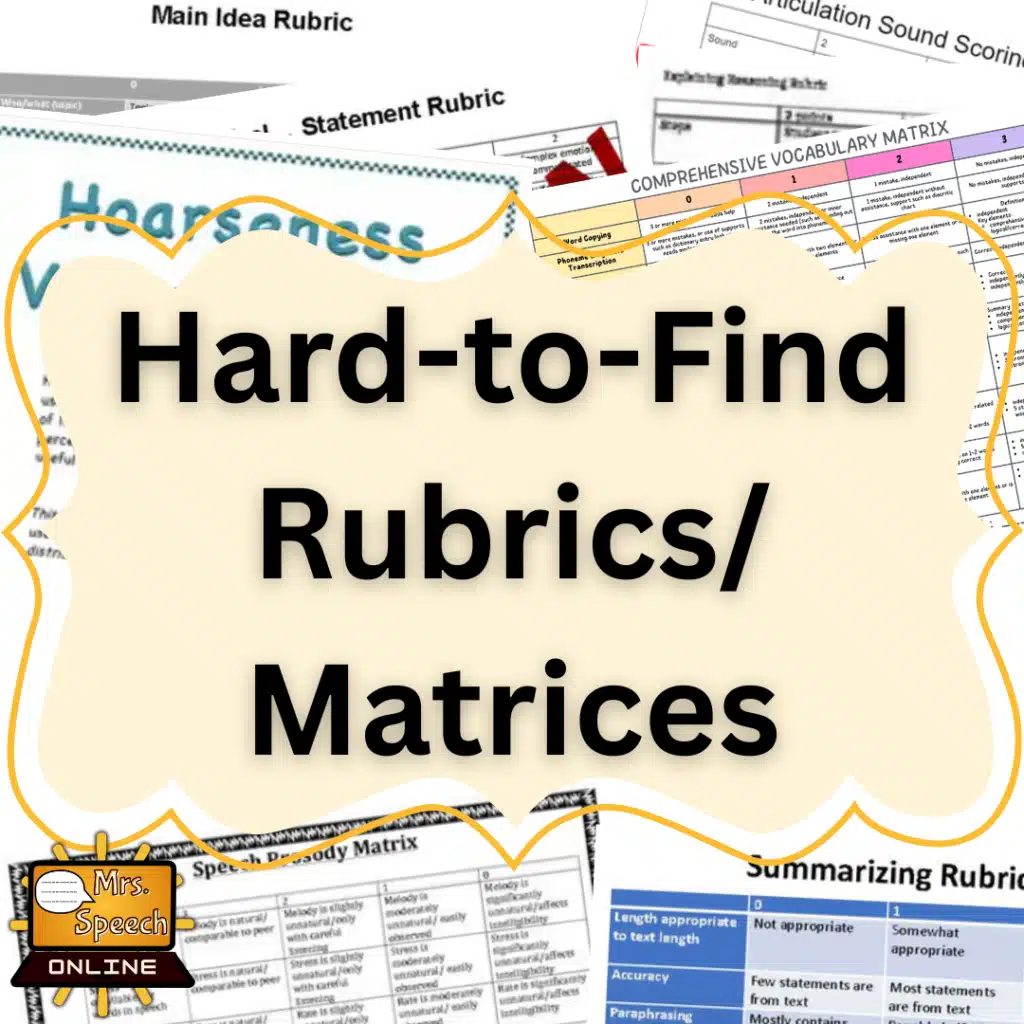
What Makes a Goal Glow?
Ever received a transfer IEP and felt completely lost trying to decipher the goals? You’re not alone! Writing clear, measurable IEP goals is crucial for effective intervention and progress monitoring. This post will guide you through creating goals that are easy to understand, implement, and track.
The Anatomy of a Stellar IEP Goal

We’ve all heard of SMART goals: Specific, Measurable, Achievable, Relevant, & Time-bound. IEP goals often hit these points on the surface, but not when you begin to apply them to charting progress.
Every well-written IEP goal should include these key components:
Student Name
Always begin with the student’s name for clarity.
Target Behavior
- Define the specific skill or behavior you’re targeting.
- Use observable and measurable verbs (e.g., “identify,” “produce,” “name,” “read,” “write,” “follow,” “initiate”).
- Avoid vague terms like “improve,” “understand,” or “learn.”
- Example: “Produce the /r/ sound in words.”
Conditions
- Specify the context in which the behavior will be observed.
- Examples: “Given a picture card,” “When presented with a list of words,” “When regulated,” “In a classroom setting.”
Criterion

- Accuracy: Set a specific, measurable and achievable accuracy level. Set challenging but realistic goals that the student can reasonably achieve within the IEP timeframe.
- Remember, the student has to meet the goal by the end of the IEP (or the timeframe you set)
- Examples: “With 80% accuracy,” “Correctly 4 out of 5 times.”
- Prompting:
- Be precise! “Minimal prompting” is too vague. Clearly define the level of prompting and if it will be faded over time.
- Type: “With gestural cues,” “With a model,” “Independently,” “With a verbal cue (e.g., ‘Think about where your tongue should be’).”
- Frequency: Is the prompting 1:1, or only 1:4?
- Timing: Is the prompt when you feel the student needs it, when they ask for help, or after a wrong response?
- Sometimes prompting is the appropriate target to measure. If the student can do it with high accuracy with help, then the goal would be to fade the prompting, and this is what should be measured for data.
- Be precise! “Minimal prompting” is too vague. Clearly define the level of prompting and if it will be faded over time.
Timeframe
This is usually tied to the IEP (ie “By the end of the IEP year”).
Baseline
Determine a baseline of the student’s current performance to inform goal setting. This can be difficult when initiating a new goal area or writing goals for an initial IEP. Ideally, you would have had time to complete a baseline probe in your evaluation, but it doesn’t always happen. It is okay to write an estimated baseline, or take your baseline from a subtest.
Writing Goals for Consistent Data Collection

Keep it Clear
Write goals clearly and concisely so that anyone can understand and implement them, and so they are easy to graph. You want to make sure that not only can you consistently measure progress, but any other SLP who might work with the student can replicate it.
Choose the Right Tool
Select a progress monitoring tool that aligns with the goal.
For articulation, consider a data sheet that not only tracks accuracy but also error types.
Use Consistent Materials
Utilize the same assessment materials whenever possible to ensure reliable data.
Don’t Collect Data Every Session:
Focus on collecting data at regular intervals to get a more accurate picture of progress and allow time for learning between data points. This is highly dependent on how often you see the student as well as the speed of expected progress. My recommendations based on service delivery (roughly every other week):
- 1X/week – every 2-3 sessions
- 2X/week – every 3-4 sessions
- 3X/week – every 5-6 sessions
Adjust data collection frequency based on the student’s progress and the complexity of the goal. Slower progressing students or highly complex goals may need more time between data points. For further explanation, see Making Data Meaningful.
Consider Rubrics for Writing Measurable IEP Goals

For skills requiring nuanced assessment (e.g., critical thinking, social skills), use a rubric to track progress along a continuum. Even articulation can sometimes benefit from a continuum, for those kids that are approximating but not quite perfecting a sound. Looking for rubrics? I have a growing collection on TPT!
Here’s a simple example of an articulation rubric (especially useful for those /r/ and /sh/ sounds):
- 0 points: Significant distortion (e.g., severe lisp, omission, substitution).
- 2 points: Moderate distortion (e.g., slight lisp, approximation).
- 3 points: Mild distortion (e.g., slight misarticulation, close approximation).
- 4 points: Accurate production with correct placement and voicing.
I have more information on rubrics in my blog post:
Mastering the Art of Measurement: A Guide to Creating Rubrics in Speech Therapy
Focus on Increases
When targeting the reduction of a behavior, it’s often more beneficial to rephrase the IEP goal to focus on the increase of the desired target behavior. This approach offers several advantages:
- Improved Parent Understanding: Parents may misinterpret goals that focus on decreasing behaviors, leading to unnecessary anxiety or confusion. Framing goals around increasing desired skills provides a more positive and reassuring message.
- Enhanced Data Collection and Tracking: Focusing on increasing target behaviors simplifies data collection and reduces the risk of confusion when tracking. You can directly measure and graph the increase in the desired skill, providing clear evidence of progress.
For example, instead of writing a goal like “Will decrease stopping of fricatives,” consider rephrasing it as “Will increase production of fricatives.” This rephrased goal emphasizes the positive outcome and makes it easier to track progress.

A Glow Up Example
Like a beauty parlor makeover, we can transform vague IEP goals to comprehensive, measurable, and highly detailed ones.
Instead of: [Student Name] will produce the /r/ sound in words with 80% accuracy.
Try: By the end of the IEP year, [Student Name] will produce prevocalic and vocalic /r/ sounds in all word positions of 1-2 syllable words with 60% accuracy, given 1:1 exaggerated models and gestural cues before production, from a baseline of 13% accuracy, on 3/4 data collection days.
Picking up this goal, I have a good idea of the word list used to measure progress, as well as what kinds of cuing/prompting is expected for mastery. Pro tip: It is entirely acceptable to use more than one sentence for a goal, if it helps with clarity and ease of reading!
By following these guidelines, you can create IEP goals that are clear, measurable, and effective for both you and the student.
For more from me on this topic, check out these articles or click on the topics below:
- Unlocking Progress: Why Simple Speech Therapy Goals Can Be Deceptive
- Documenting Beyond Quantifiable Data: SLP Session Notes
Happy goal writing!
Social Media Icons: designed by rawpixel.com – Freepik.com













